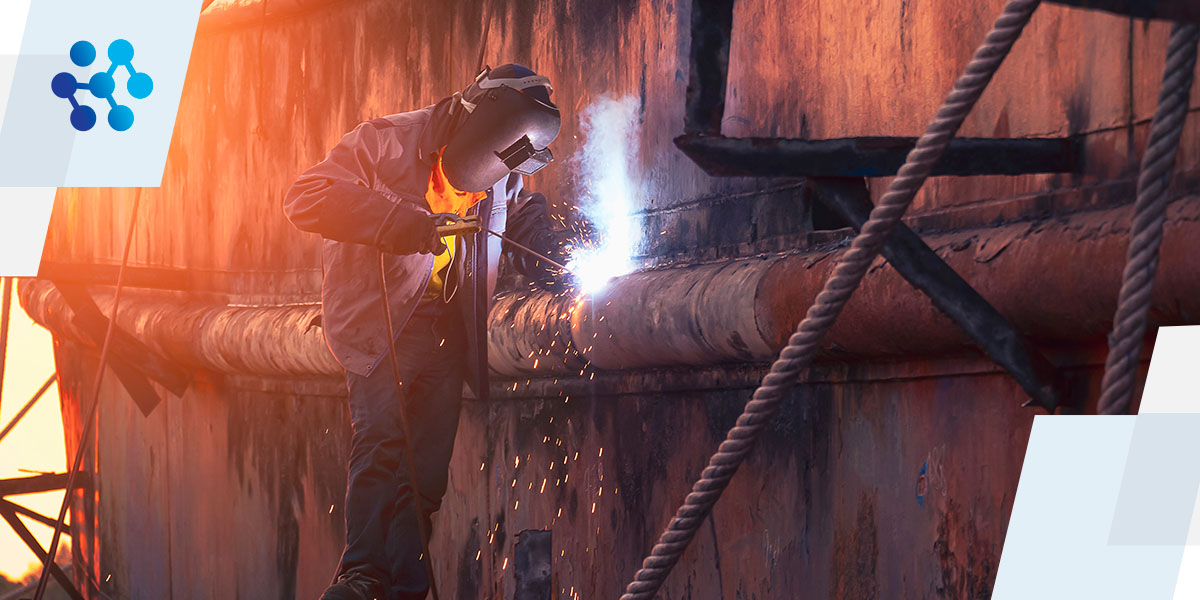

Producing the best quality work is how you stand out from competitors and build a reputation of excellence. Throughout the welding process, there might be challenges that stand in the way. In some cases, these issues create defects that may compromise structure integrity, which leads to safety issues.
Taking the appropriate measures to prevent these problems from happening is ideal, as fixing welding defects can be expensive and lead to reputational problems in the long run.
Welding defects are imperfections that appear when the weld or joints weaken due to incurring too much pressure during the welding process. When the materials move past the point of tolerance, they can change shape or size and create issues with the overall quality of the weld.
Defects occur for various reasons, ranging from incorrect procedures to the materials used to whether the welding operator has enough training. Additionally, welding issues can be internal or external. Internal welding defects, such as slag inclusion or incomplete fusion, are invisible from the outside. In comparison, you can see external or visual welding defects on the metal surface.
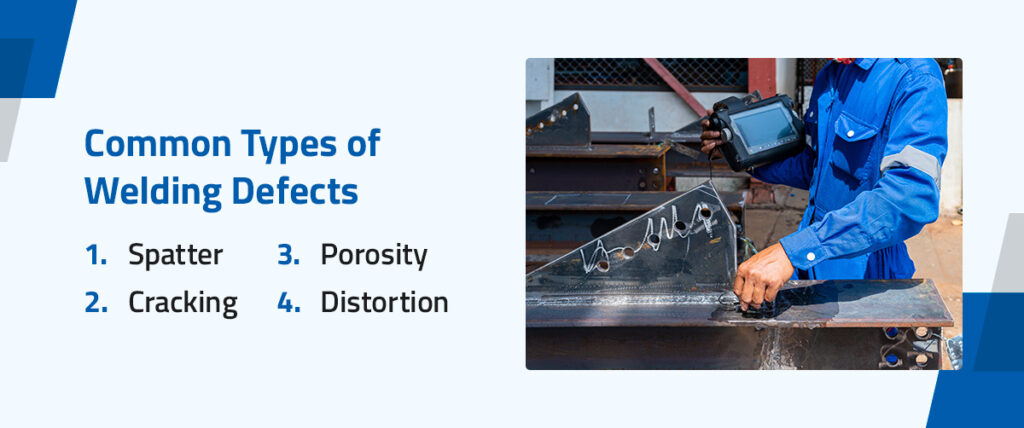
The four most common welding problems that create defects include:
Spatter is a welding defect where hot metal droplets hit the metal surface, then cool and solidify, sticking to the surface. In most instances, splatter does not impact structural integrity, but you should avoid it.
The most common cause of spatters is metal droplets splashing or contacting the weld pool. Sometimes, the cause is non-metallic material that flies around the workbench and then attaches to the metal surface. Other causes of spatter include:
Welding cracks happen due to weld discontinuity. The cracks either occur on weld metal or areas of the welding joint where there was heat. Welding cracks can appear as a result of either hot or cold temperatures.
Hot cracks often appear when incorrect fillers are used, while cold cracks appear hours or days after the cooling process. One of the most concerning things about cracks is that they will continue to grow if you do not fix them.
When welding happens on dirty or rusted metal, it will likely cause cracks. Incorrect welding design and procedures can also lead to welding cracks. Another cause of cracks is using hydrogen shielding gas and high levels of carbon or sulfur.
One of the best methods to prevent cracking when welding is preheating welding metals and allowing the weld joints to cool down gradually once welding is complete. Carefully choose your welding materials, as cheap materials will crack due to temperature changes, and maintain weld joint gaps.
Porosity happens when gas bubbles form and cause holes in the weld pool. These gas bubbles often occur due to issues relating to shielding gases such as nitrogen, hydrogen or oxygen. These gas bubbles can lead to leaks and weaken the structure of the weld. Porosity can also result from substances such as oil, moisture and grease on the welding surface, as they increase the chances of evolved gas being trapped during welding.
To prevent welding porosity, you can adopt strategies focusing on air entrainment, such as reducing high gas flow, sealing air leaks and avoiding weld pool turbulence. Before working on weld joints, clean them on both sides to reduce the risk of trapping evolved gas. An extra precaution would be to check the weldable primer and ensure it is below the recommended maximum thickness level.
Distortion occurs when weld joints change their shape due to excessive heating. During the welding process, metals expand due to the heat. When they expand, some parts might bend or warp shape, resulting in structural integrity issues. The leading causes of distortion are related to technical issues, such as using incompatible weld and base materials or large amounts of weld passes.
The first step to reduce distortion is to heat the part evenly with the help of an oven or heating mechanism that uniformly heats welding materials. After welding, cool down the parts evenly for better airflow between components.
Sometimes, distortion occurs as thermal expansion leads to internal pressure, which then causes distortion. A work holding device will effectively keep the parts in place and prevent warping. Thin metal parts can often become distorted, so only work with metals that can handle heat.
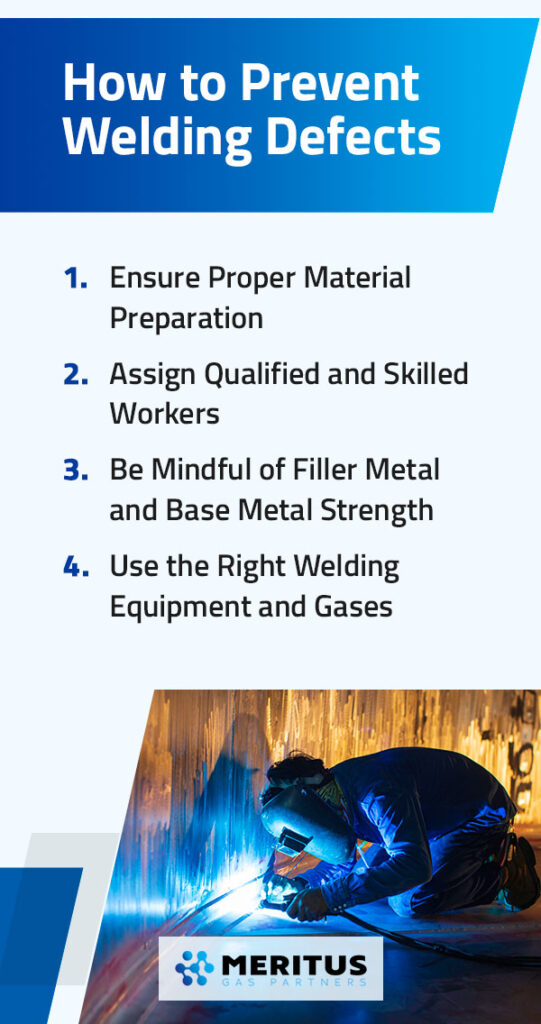
Welding defects can create issues that might be expensive and time-consuming to rectify, leading to downtime and impacts on your bottom line. Preventing the problem as much as possible is always the best approach.
Some welding problems occur due to how you handle materials. Welding operators should be mindful of the temperature in which they weld or store materials. Filler metal spools and grinding stations, for example, should not be stored together, as particles will settle on the wire, creating inclusions on the weld.
Look at the storage instructions for different materials, especially before the first use. Your materials might sit without being used for long periods, and if you do not store them properly, they might weaken even before their first use.
When welding operators are handling materials, they should wear the proper gloves and ensure the atmosphere does not have too much moisture. Covering spools with plastic when not in use is also essential to reduce air contaminants that result in weld quality issues.
A lack of training around good welding practices can lead to problems, as operators might need to be more knowledgeable about conducting specific tasks or storing and preparing certain materials.
When hiring workers, ensure they have the qualifications or training required for the job. Another practice you can adopt is encouraging regular, ongoing training. Welding operators should know how to troubleshoot common welding issues and understand the unique requirements of their roles, such as those about safety.
You can partner with a local welding manufacturer to train employees and ensure they meet industry standards. If you have the resources, you can create your own training programs, making it easier to receive continuous education.
When you use materials with different strengths, they can create welding defects. The key is using a suitable filler metal. Work around the base metal’s strength, which will determine the kind of filler metal required for your project. Do what you can to use materials with the same strengths or materials that are as close as possible in strength.
If you work with one low-strength material and another with a higher strength, use a filler that matches the low-strength metal for better flexibility. Filler joints should match the strength of the filler metal instead of the base metal to avoid welding issues that occur from residual stress.
Note that only some materials can hold up during the welding process. For example, filler metals can create welding defects, and cold cracking is a common issue involving hydrogen.
Invest in filler materials with an H4 or H8 designator, as they reduce the amount of hydrogen that enters the weld and result in cracking when the weld cools down. Look for filler metals with high levels of hydrogen scavengers like calcium, fluoride and sodium, which will bind with hydrogen, preventing the weld from cracking when cooling down.
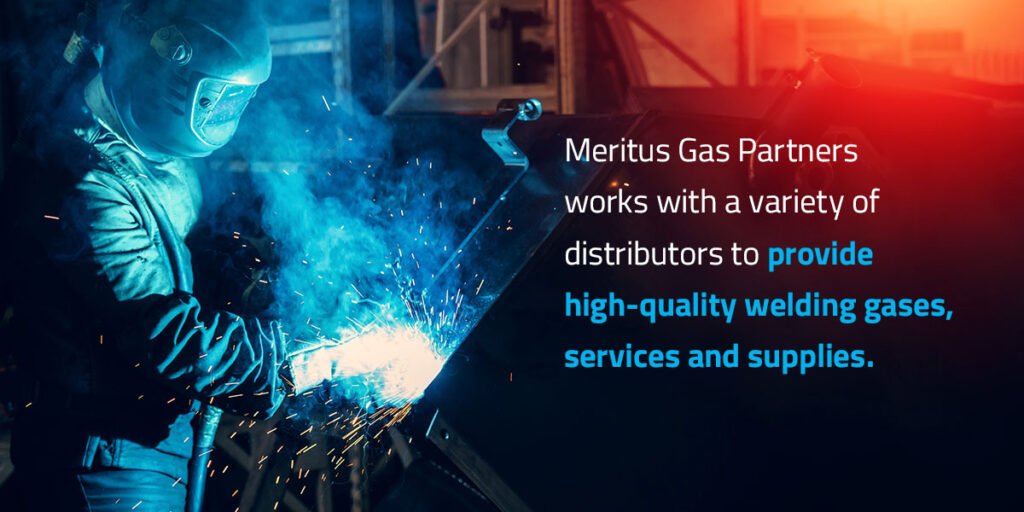
Preventing welding defects is easier when you partner with a professional team with welding expertise. Meritus Gas Partners works with a variety of distributors to provide high-quality welding gases, services and supplies. Our network of companies has worked with businesses from various industries, including construction, manufacturing, agriculture and transportation.
Gas can cause several issues related to welding — preventing these issues is of utmost importance. Having an expert team on your side that can answer any questions or make recommendations can make a difference during the welding process. We carry gas and gas equipment from top-rated manufacturers, so you can focus on your welding processes knowing you can trust the quality of our products.
Cutting tables can also contribute to welding defects. Meritus Gas Partners provides a line of computer numerically controlled machinery (CNC) that helps create more precise cuts. CNC machinery comes in different sizes, accommodating all types of businesses and their goals.
Safety is essential to welding. We provide personal protective equipment like gloves, welding helmets, hearing protection and face and eye protection. Protective equipment is also critical for preventing welding defects. In particular, welding operators should wear gloves, as the moisture from their hands should not come into contact with the filler.
We also provide abrasives and welding tools such as trolleys, stick welders and chipping hammers to help you complete welding jobs with ease and avoid welding defects.
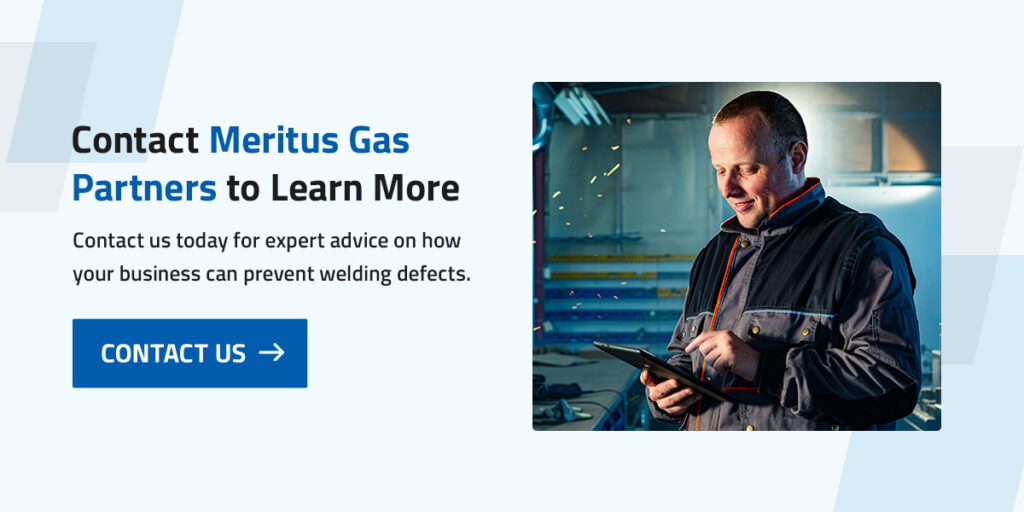
Cracks, spatter, porosity and distortion are the most common welding defects. These welding defects can lead to issues with productivity and costs, so you must take measures to avoid them. You can prevent defects by using the right gases and materials for welding.
Meritus Gas Partners provides only the best quality gas and materials through our comprehensive network of distributors. Contact us today for expert advice on how your business can prevent welding defects.